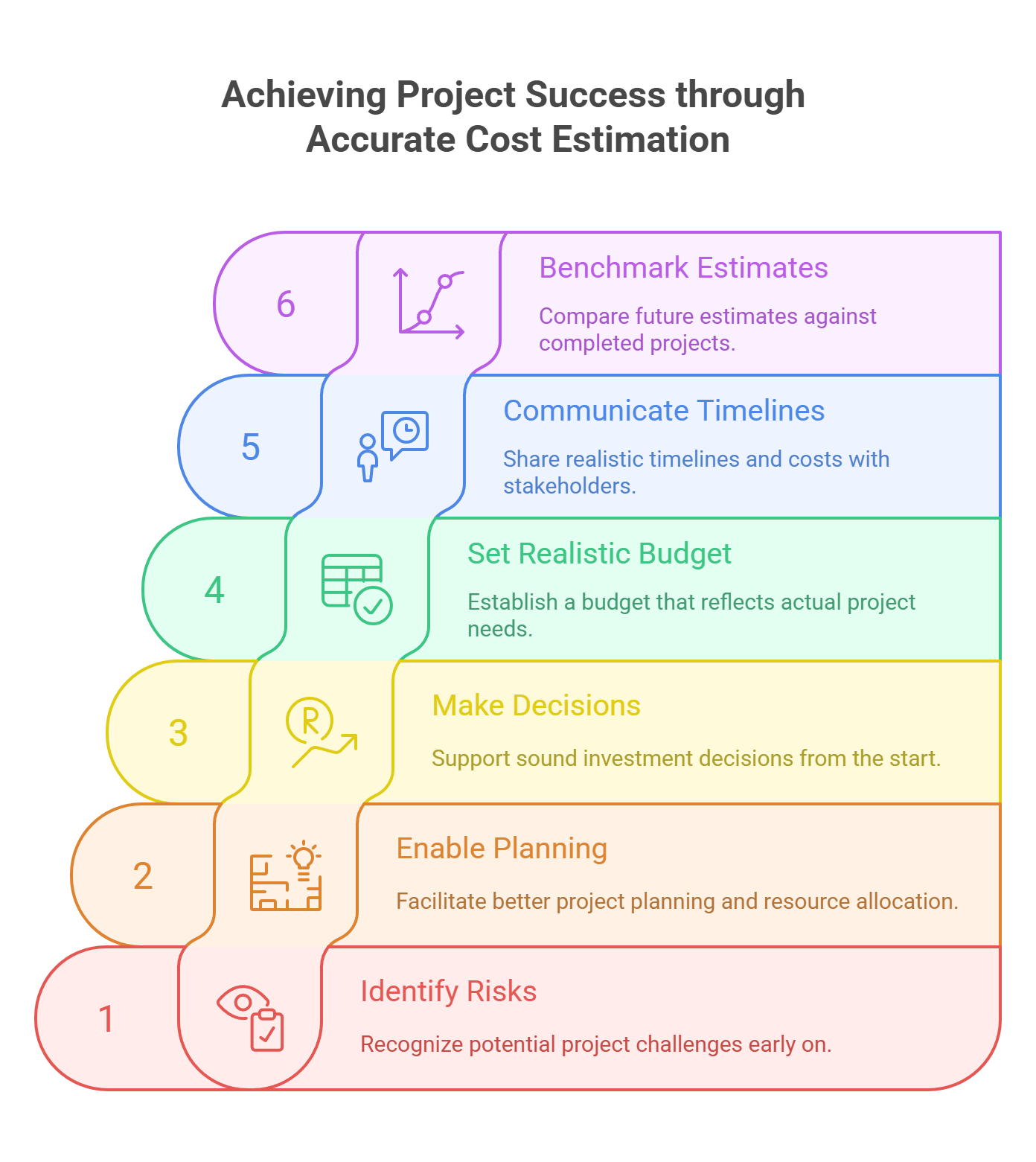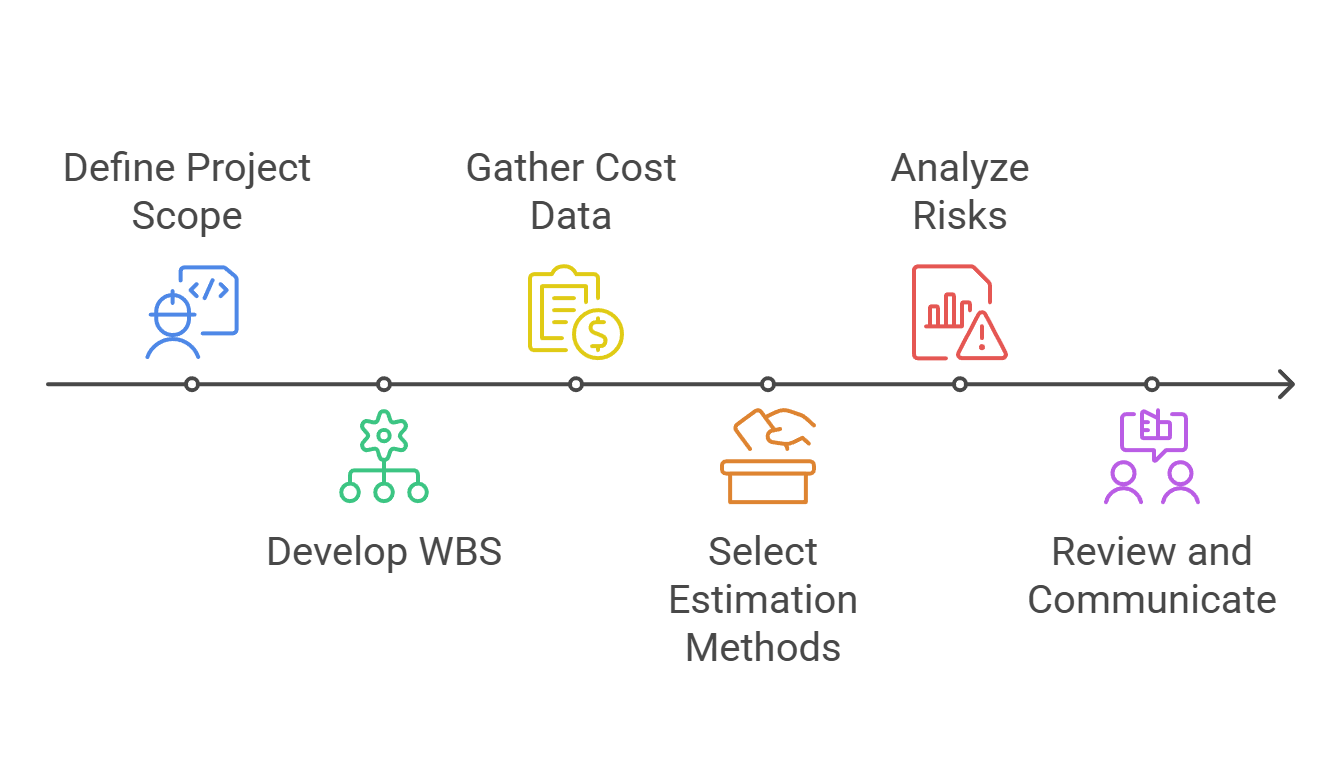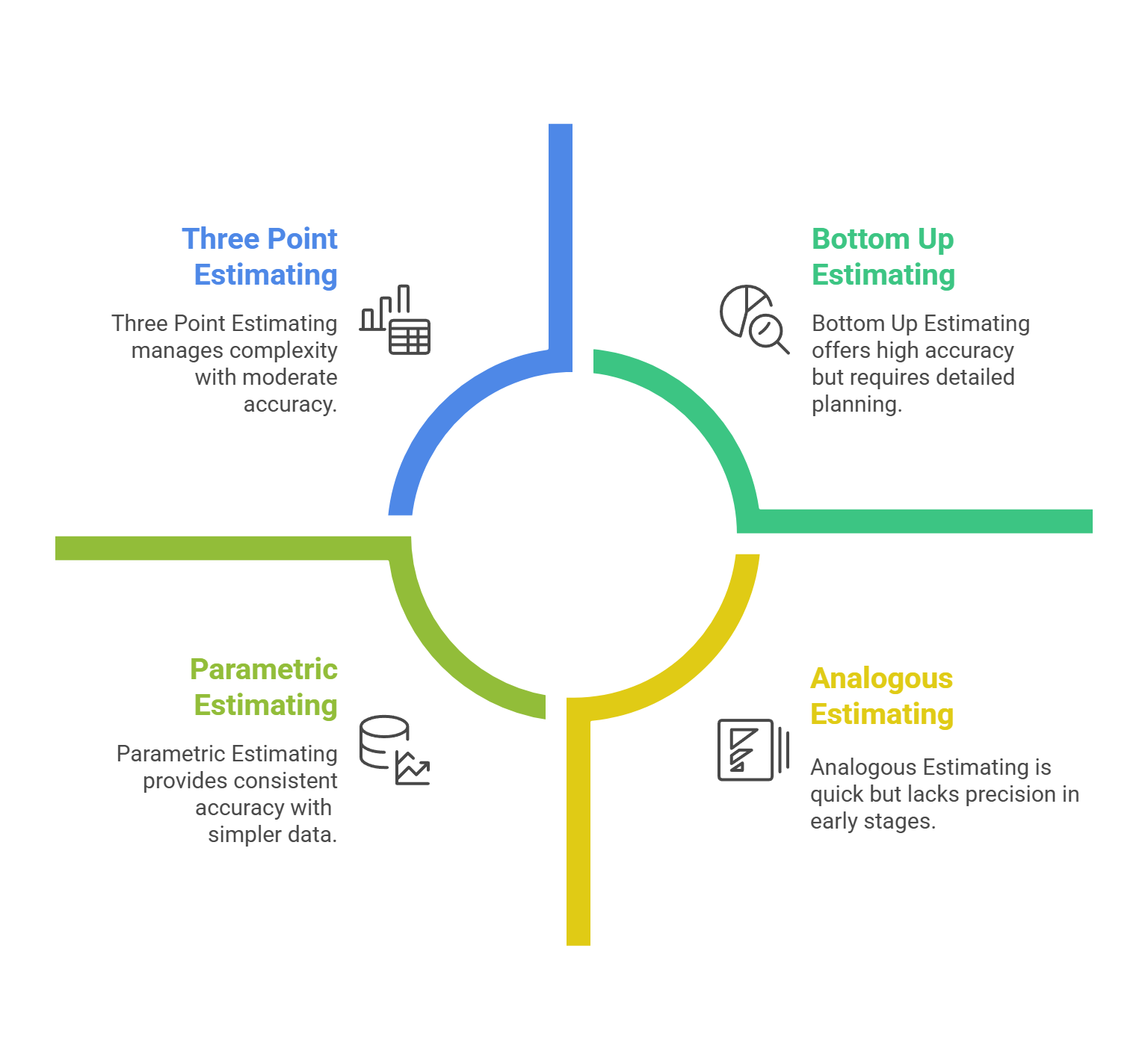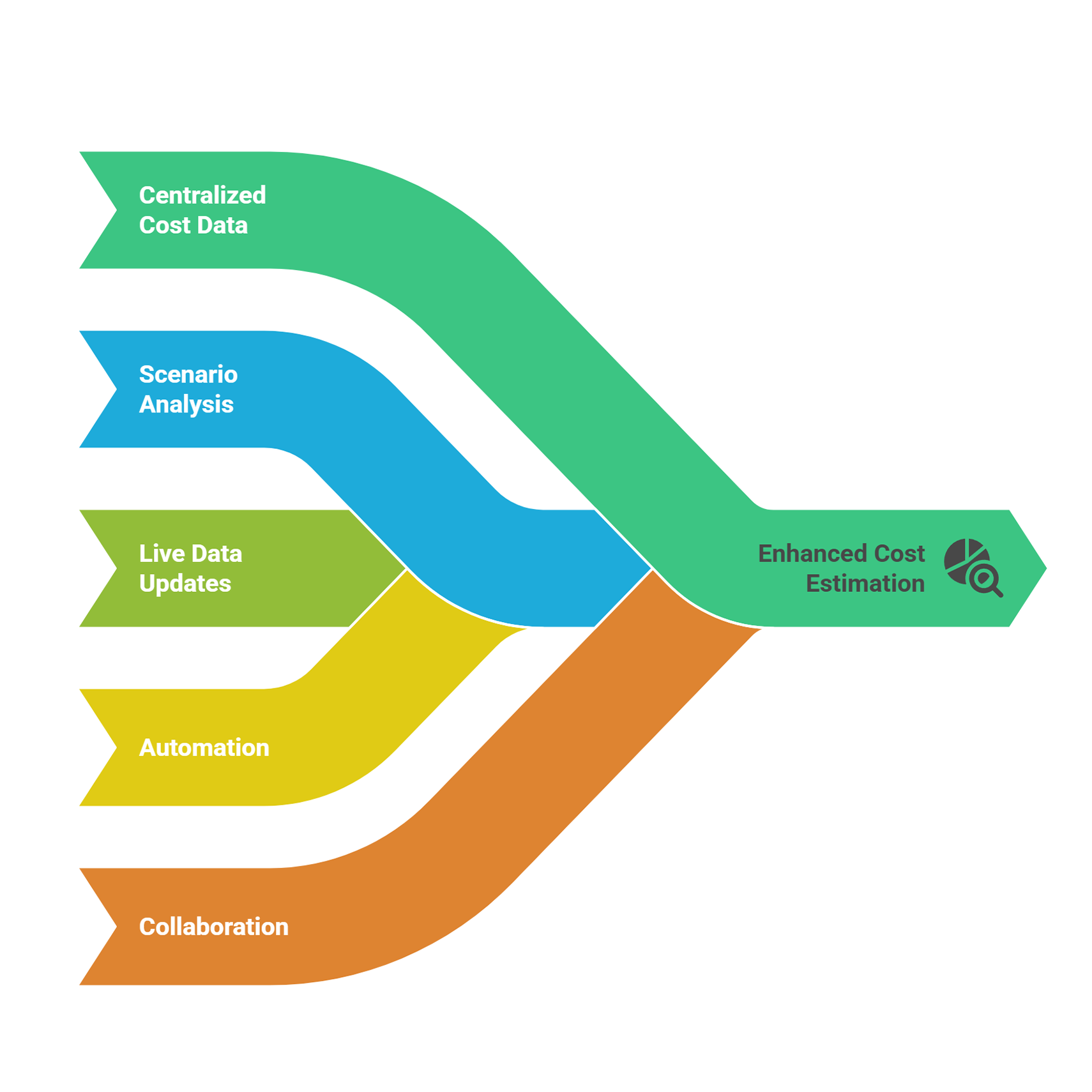

What Is Cost Estimating? A Complete Guide for Modern Project Teams
TL;DR: Cost estimating is the backbone of any successful project, ensuring budgets are realistic and key risks are addressed from the start. This guide breaks down what estimating actually is, who uses it, core estimating methods, and how digital tools like CostOS are helping teams across different industries create accurate estimates, manage project expenses, and increase project success.
Introduction
Keeping project estimates within the project's budget is no easy feat. When a estimate is off-target, the fallout is tough: costs spiral, deadlines slip, and you’re left with a cascade of challenges. Many teams still juggle outdated spreadsheets, incomplete cost data, and sprawling project scopes. The upshot? Preparing estimates you can trust, or spotting overruns before they happen, is a real challenge for project managers and estimators alike.
Projects today are larger and more complex. Stakeholders expect tight construction estimates, quick decision making, and transparency about total cost. Manual workflows and fragmented data put more pressure on accurate estimating and project planning. Cost management becomes a daily battle.
That’s where dedicated estimating software steps in. Tools like CostOS bring structure and clarity to the estimating process. They help project managers, estimators, and teams identify risks earlier, standardize estimation methods, and deliver estimates everyone can rely on. In this guide, you’ll learn what estimating is, why an accurate estimate matters for every project, and how smart technology is changing everything.
What is Cost Estimating?
Cost estimating is the process of approximating how much it will cost to complete a project, deliver a product, or run an operation. According to the U.S. Government Accountability Office, an estimate is the summation of individual cost elements, using established methods and valid data, to estimate the future costs of a program or project based on what is known now.
A well-developed estimate accounts for all direct costs like construction costs, labor, materials, equipment, as well as overheads and contingency for unforeseen challenges. It’s the groundwork for effective project management, project planning, and setting a reliable project's budget.
Cost estimating is used in many fields, but especially in construction, engineering, manufacturing, government, IT, and energy. Project managers and estimators rely on robust construction estimates from the earliest planning stages through to final delivery.
Why Accurate Cost Estimation Matters in Project Management

Accurate cost estimation saves time and money, increases transparency, and minimizes project risk. When project managers start with a solid estimate and structured process, they can:
- Identify potential risks early and include contingencies to address them
- Enable better project planning and resource allocation
- Make sound investment decisions from the project’s earliest phases
- Set a project's budget that reflects reality, not wishful thinking
- Communicate realistic timelines and costs to stakeholders
- Benchmark future project costs against completed projects
Cost estimation empowers decision-makers to commit to work, establish budgets, and avoid cost overruns. Conversely, inaccurate estimating can derail project feasibility, leading to schedule delays, blown budgets, and sometimes, cancelled projects.
Cost Estimation in Practice
Who Uses Cost Estimation, And When?
Cost estimating is fundamental in any industry running projects at scale:
- Construction and Engineering: Estimators refine construction estimates as designs progress, from preliminary estimate to detailed estimate, anchoring project management decisions throughout.
- Manufacturing: Teams analyze material costs, labor hours, and direct costs to guide pricing and profit margins.
- Government and Infrastructure: Estimates help size up projects, justify spending, and evaluate proposals.
- Energy, Nuclear, and Utilities: Large capital projects rely on thorough estimating methods, risk analysis, and long-term cost management.
- IT: Project managers rely on early rough estimates, then develop full estimates as projects are defined.
In the early stages, high-level or rough estimate figures include broad assumptions and possible swings of ±50%. As the project scope and data become better defined, estimates narrow in range and accuracy improves, often within ±10%.
Key Steps in the Cost Estimating Process
A reliable estimate doesn’t happen by guesswork. It’s built through a disciplined estimating process:

- Define Project Scope
Clear definitions drive accurate estimates. The more detailed your scope, the better your estimate accuracy. - Develop a Work Breakdown Structure (WBS)
Breaking projects into smaller, manageable components helps ensure all associated costs—direct and indirect costs—are considered. - Gather Cost Data
Pull information from historical costs, completed projects, and reliable databases. This gives your estimates a real-world grounding. - Select and Apply Cost Estimating Methods
Match the method to the phase and available data: analogous estimating, parametric estimating, bottom up estimating, or three point estimating. - Analyze Risks and Add Contingencies
Factor in potential risks or unknowns with contingency reserves. - Review, Validate, and Communicate
Use checklists, seek expert feedback, and compile your estimates into documents like a Detailed Basis of Estimate (BOE) for decision-makers.
A high-quality estimate documents not only the numbers but also all data, assumptions, and rationale used. This transparency and structure helps independent review, giving all parties confidence.
Documents and Tools for Accurate Estimates
Professional estimators use:
- Historical Project Databases: For benchmarking and comparison
- Templates for Consistency: Standard formats help cover all cost elements
- Expert Documentation: Capturing unique project assumptions and ground rules
- Checklists: Ensure every direct, indirect, and associated cost is included
- Estimating Software: For robust modeling, scenario analysis, and cost analysis
Construction estimates, for example, range from preliminary estimate (rough order of magnitude) in the planning stages, through schematic and design development estimates, to bid and final estimate at project completion.
Core Cost Estimation Methods
Selecting the right estimating methods matters for every project, especially in construction. Each method works best at different project stages or with different levels of available data.
Analogous Estimating
This method forecasts the current project’s cost by comparing it to past projects of similar scope or complexity. Relying on historical data and expert judgment, analogous estimating is quick and effective when detailed information is scarce. It's useful in the early stages.
Parametric Estimating
Parametric estimating links measurable project drivers—like area, volume, or unit cost—to total project cost. Using historical data and mathematical models, this method provides accurate, consistent estimates especially when you know the “what” but not all the “how” details.
Bottom Up Estimating
Bottom up estimating breaks the project into small, defined tasks. Separate estimates are made for each, then aggregated into the total estimate. This yields the highest accuracy, but demands a well-defined scope and detailed cost data.
Three Point Estimating
Three point estimating considers best-case, most likely, and worst-case scenario costs for each project task, then uses statistical techniques to calculate a balanced estimate. This helps project managers account for uncertainty and boost estimate accuracy.

Choosing the Right Estimating Method
Experienced project managers and estimators often combine estimating methods. Analogous estimating may be used for preliminary estimates; as scope becomes defined, parametric estimating and bottom up estimating provide greater detail and confidence.
For construction estimates, Order of Magnitude estimates guide initial feasibility. As plans progress, more granular schematic design and construction document estimates are developed to lock in project costs.
Practical Applications: Construction Cost Management
Construction Cost Estimating in Action
Accurate construction estimates are vital at every step:
- Order of Magnitude Estimate: Broad, early estimate based on past projects or unit cost.
- Schematic and Design Development Estimates: Updated as plans and materials become concrete.
- Construction Document Estimate: Developed from detailed plans, materials lists, and labor costs.
- Bid Estimate: Final estimate for contractual pricing.
Types of costs considered:
- Direct Costs: Labor costs, construction materials, equipment.
- Indirect Costs: Site administration, supervision, insurance, temporary facilities, and project management overhead.
- Associated Costs: Permits, fees, contingency, escalation.
Construction estimating methods and tools help identify resources needed, set an accurate budget, and reduce cost overruns. A well-documented estimate with a Basis of Estimate (BOE) ensures all assumptions and ground rules are transparent for stakeholders.
Cost Estimating Across Industries
- Manufacturing: Cost estimating accounts for production costs, past projects, and unit cost analysis to set profit margins and guide investments.
- Energy, Oil & Gas, Mining: Estimators sort estimate types by class, manage long timelines, analyze risk, and develop contingency strategies for volatile costs.
- IT and Technology: Parametric models and project management tools help estimate new builds, upgrades, and total cost of ownership.
No matter the field, cost estimation accounts for scope changes, analyzes project feasibility, and tracks project cost performance from planning to closeout.
Digital Workflows and Estimating Software for Cost Estimators
Why Estimating Software is a Game Changer
Transitioning from manual spreadsheets to robust estimating software changes the game for estimators and project managers alike. Key benefits include:
- Centralized Cost Data: Materials, labor, overhead, and historical costs in one place
- Scenario Analysis and Modeling: Test assumptions and predict costs for greater accuracy
- Live Data Updates: Stakeholders always see the latest estimates, reducing gaps and surprises
- Automation: Automate cost calculations and minimize human error
- Collaboration: Teams can work together on cost estimates, improving transparency and speed

Modern estimating software supports the entire estimating costs process, ensures cost estimation methods are consistent across teams, and increases accuracy. For construction, manufacturing, and infrastructure, solutions like CostOS offer everything from benchmarking through final estimate, all built for real-world project management needs.
Cost Estimation Best Practices
To produce accurate estimates and effective project management, follow industry best practices:
- Define project scope and ground rules as clearly as possible
- Engage all relevant experts and stakeholders in preparing estimates
- Leverage historical data and benchmarking from past projects
- Maintain thorough documentation (Basis of Estimate) for independent review
- Update and review estimates regularly as new information is available
- Include contingencies for unforeseen circumstances and risks
- Use estimating methods that fit the phase and available cost data
High-quality estimates are developed through structured processes. As the project progresses and the defined scope improves, the range of uncertainty in the total cost decreases and estimate accuracy increases.
Frequently Asked Questions
What is a cost estimate in project management?
A cost estimate approximates how much it will cost to complete a project or an operation, drawing on data, historical costs, and predefined methods. It provides the foundation for project budgeting, planning, and decision-making.
How does cost estimating differ from budgeting and forecasting?
Cost estimating predicts what a specific job or project will cost using current scope and historical data. Forecasting looks at broader financial trends to anticipate upcoming costs. Budgeting is the act of allocating funds based on both estimates and forecasts to control spending.
What are the most important cost estimating methods?
Four main techniques are used:
- Analogous Estimating: Uses past projects for benchmarking
- Parametric Estimating: Relies on statistical models and cost drivers
- Bottom Up Estimating: Breaks the project into components for detailed estimate
- Three Point Estimating: Analyzes best, worst, and most likely costs for risk balance
Why is software critical for cost estimation now?
Estimating software streamlines data, minimizes errors, facilitates scenario analysis, and supports collaboration. It helps project managers prepare accurate estimates, track project cost changes, run statistical analysis, and standardize processes.
What makes cost estimation essential for project success?
Accurate estimates allow teams to identify and manage risks early, estimate resources required set realistic project's budgets, and avoid project overruns. Well-documented estimates with a Basis of Estimate (BOE) also improve communication with stakeholders and build credibility.
What improves the accuracy of a cost estimate?
Estimate accuracy hinges on the quality of input data, definition of project scope, the total project cost estimation method used, and ongoing independent review as the project evolves.
Conclusion: Cost Estimating as a Foundation for Success
Accurate estimates enable confident project planning, defend budgets, and prevent unpleasant surprises like project overruns. By following a structured cost estimation process, using appropriate construction cost estimates, and leveraging powerful estimating software, teams can build reliable project plans, whatever the industry.
Ready to up your estimating process? Explore Nomitech’s full suite or get in touch to see which solutions will fit your team and your project management goals.
Quick Reference: Cost Estimation Key Takeaways
- A cost estimate is the approximation of all costs for a project, based on defined scope and valid data.
- The estimation process includes: scope definition, work breakdown, collecting data, selecting methods, risk analysis, and ongoing review.
- Common cost estimation methods: analogous estimating, parametric estimating, bottom up estimating, three point estimating.
- High-quality cost estimates rely on accurate input data, structured methods, expert input, and independent review.
- Accurate cost estimation saves time and money, drives transparency, supports investment decisions, and makes project management more effective.
- Using dedicated estimating software helps with accuracy, collaboration, and real-time updates, which is essential for modern project teams.




